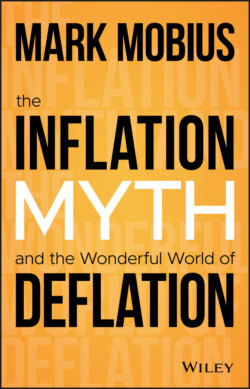Читать книгу The Inflation Myth and the Wonderful World of Deflation - Mark Mobius - Страница 14
Marco Polo and Money
ОглавлениеIn 1271, the traveler and explorer Marco Polo set off for the court of Khubilai (otherwise known as Kublai Khan) the same year the latter established the Yuan Dynasty and became Emperor of China. Polo's journey to reach Khubilai's court at Shangdu took him four years and was not without incident: the fall of the city of Xiangyang in 1273 to Khubilai's troops was just one episode in which Polo was involved. All of this, and his impressions of Khubilai's court, Polo wrote up in a book that in France was traditionally called Le Livre des Merveilles (The Book of Marvels) and which is known in English more prosaically as, simply, The Travels.
Out of the many marvels that Marco Polo was struck by was the Yuan Dynasty's use of banknotes. “The emperor's mint is in this city of Khanbaliq,” he wrote, “and it is set up in such a way that might well say he has mastered the art of alchemy.” Polo described in detail how the Great Khan, as he called him, went about making the notes: “He has the bark stripped from trees – to be precise, from the mulberry trees whose leaves are eaten by silkworms. Then the thin layer of bast fiber between the bark and the wood of the tree is removed. After being ground and pounded it is pressed with the aid of glue into sheets like those of cotton paper, which are completely black. And when these sheets are ready, they are cut up into pieces of different sizes, rectangular in shape and of greater length than breadth. And they are made with such authority and solemnity as if they were cast from pure gold or silver … when everything has been done correctly the chief of the officials deputed by the emperor dips the seal entrusted to him in cinnabar and stamps it on the piece of money, so that the imprint of the seal dipped in the cinnabar remains impressed upon it; and then the money is legal tender.”5
Polo's enthusiasm for paper money is proof of how far ahead China was in its understanding of monetary policy in comparison to their Western counterparts: it wasn't until the seventeenth century that paper bills began to be used in Europe. But what Marco Polo had been so impressed by, wasn't something new to China. In fact, the concept had its origins several hundred years earlier during the Tang Dynasty of 618–907. Here, bills of exchange, printed on pieces of textile, were used by businessmen and government officials to take money from one city to another. The notes were known as Feiqian or “flying money,” on account of the money being able to “fly” back without the need for coins or gold.
But it was not long after the invention of the idea that the appearance of inflation followed suit. An official version of Jiaozi, or certificate of exchange, was launched in 1023, with the stipulation that the notes were convertible to coins. However, the pressure on government finances due to fighting wars resulted in the printing of more Jiaozi. By devaluing the notes against the coins they were meant to represent, the result was a sharp rise in inflation – by 1107, there was 20 times the total amount of Jiaozi compared to the initial launch. The result was that the notes were ultimately withdrawn and replaced with a new set of notes: to avoid another round of rising prices, a set percentage of the printing of any new notes had to be matched by an increase in coin reserves.
By the 1160s, the now dominant Southern Song Dynasty added a further stipulation – all notes were to be recalled and redeemed for copper coins every three years. This was a system that held until, once again, the need to finance military activity saw a relaxing of these rules and the printing of paper notes rose again. By the time of Marco Polo's travels, the now dominant Yuan Dynasty had issued national paper currency, with which it guaranteed convertibility into silver, and banned the use of coins in trading, forcing the use of the new currency.
